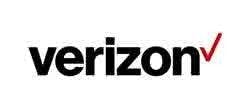Verizon launches review of its lead sheathed copper cables
Verizon found itself in the hot seat during its second-quarter earnings call, answering questions about how much lead cable is in its copper network following a WSJ article investigation into its network.
The lead copper cable issue came to light after an investigative series published by the Wall Street Journal revealed the presence of abandoned lead cables across the country.
According to the report, several abandoned cables run through or under rivers, streams, and lakes that serve as drinking water sources for communities. What’s more, the report found the presence of these cables in local neighborhoods, playgrounds, and greenways where children may be exposed to them.
The telco said that lead infrastructure makes up a small percentage of its copper network. It began phasing away from installing new lead cables by the 1950s.
During its second-quarter earnings call, Tony Skiadas, EVP and CFO of Verizon, told investors that the telco still has lead sheath copper cabling, but it needs to analyze what exactly is there.
“We still have some lead-sheathed cable in our copper network,” he said. “As a result of the age of this infrastructure and the history of the industry, records are incomplete as to exactly how much of the cable on our network has lead sheathing.”
A historical review
Now that the copper cabling issue has been brought to light, the service provider plans to conduct a historical review of its assets.
Today, Verizon’s network includes less than 540,000 miles of copper cable. About half of that amount of copper is aerial and lead-sheathed cable makes up a small percentage of its network.
Skiadis said that the amount of copper cabling Verizon has “excludes the network elements previously owned by MCI and XO Communications because we are still reviewing the historical records of those companies.”
Regarding the health risks raised in the WSJ article and by environmental groups like the Environmental Defense Fund (EDF), Below the Blue, and Clean Water Action, Verizon maintains that the exposure of lead-sheathed cables to residents is “low.”
Skiadis said, "because the lead-sheathed cable was used as a feeder and distribution cable and does not run into individual homes or apartments, it is generally in locations that minimize the potential for public contact.”
To address the lead copper issue, Verizon is working with an independent organization to test the copper at the sites cited by the WSJ and other media outlets. “We are working with a third-party expert to conduct our testing at our sites that were identified by the media,” Skiadis said. “We will not have the results of our testing for several weeks. When we have the results of our testing, we will work closely with our industry and others to address any concerns and issues.”
Financial costs?
One of the critical concerns investors have raised since the WSJ report appeared is the cost and process it would take to remove the lead-sheathed cable.
Skiadis said he could not provide anything specific since they are just beginning their analysis.
“Given where we are in this process, it is far too soon to make any projection on what the potential financial impact might be to the company,” he said.
He added that Verizon still must determine if there’s a threat to the communities where the lead-sheathed cable is present. “There are several unknowns in this area, including whether there is a health risk presented by undisturbed lead sheet cable and, if there is a risk, how that risk should be addressed,” Skiadis said. “As a result, we do not believe there's a meaningful way to estimate any potential cost to the company or that any such estimate would even be useful.”
Accelerating copper retirement
Besides the health risks that the lead copper sheathed cable could pose, the other question posed to Verizon is whether the revelation of the lead cable could accelerate its copper retirement process.
Like its fellow ILEC AT&T, Verizon has in recent years replaced parts of its aging copper network with fiber in parts of its wireline territory.
Hans Vestberg, chairman and CEO of Verizon emphasized that Verizon would conduct a detailed assessment of its copper network infrastructure.
“When it comes to this lead-sheathed cables discussion, we're going to go through this scientific,” he said. “We're going to do it fact-based, and then we'll come back.
Vestberg added that the telco is continually finding ways to upgrade its network.
“We have a normal network transformation that we constantly do because Kyle and team are doing that to keep up with the pressure of the secular decline in wireline, so he will continue to do that, and we do that all the time,” he said.
About the Author
Sean Buckley
Sean is responsible for establishing and executing the editorial strategy of Lightwave across its website, email newsletters, events, and other information products.

